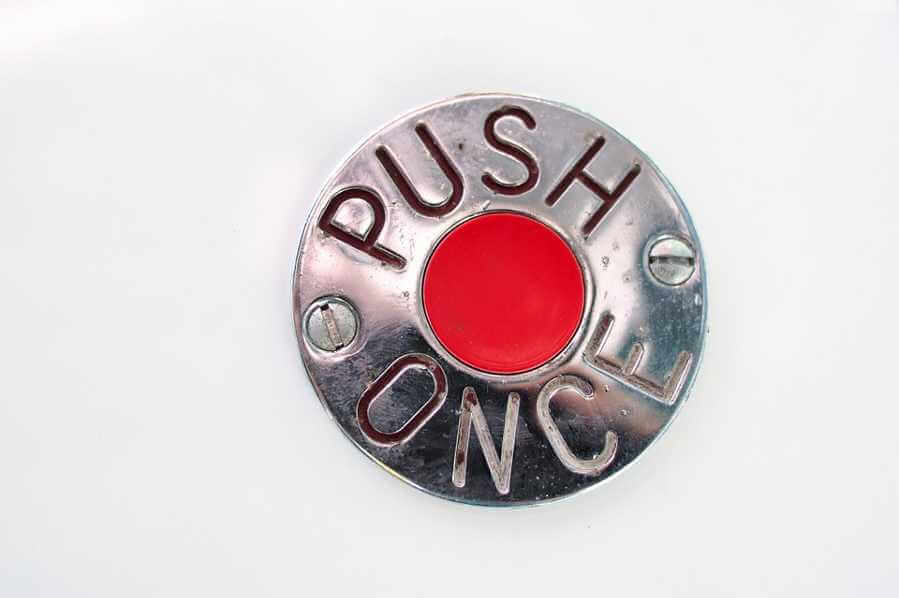Shaving critical minutes off the time it takes to diagnose a heart attack and begin treatment could be as simple as the push of a button. Using a programmable button to page a phlebotomist for a blood draw reduced the time it took to identify patients suffering a heart attack by more than 11 minutes on average, in a study presented at the American College of Cardiology’s 71st Annual Scientific Session.
According to researchers, the study represents the first time programmable button technology—designed to help consumers easily order products online—has been applied in a medical setting.
“Often in medicine you need a rapid response, but there are many processes that require numerous laborious steps that take time, and in the setting of a potential heart attack, time is muscle. The longer the wait, the more damage there is to the heart muscle and less chances for recovery,” said Milind R. Dhond, MD, medical director of cardiovascular medicine at NorthBay Healthcare in Fairfield, California, and the study’s lead author. “This approach potentially can cut out many steps. It’s using innovative technology in an innovative way by bringing together the technology and the application to improve the process.”
To diagnose a heart attack, doctors look at the level of troponin in the blood as an indicator of damage to the heart muscle. Drawing blood and sending it to the lab for analysis is integral to the process used to determine whether a heart attack is occurring before clinicians intervene to open the blocked artery.
Researchers adapted the Internet of Things (IoT) button developed by Amazon Web Services to page an on-call phlebotomist for a blood draw whenever a patient arrived in the hospital’s emergency department with chest pain. The device is a physical, handheld button that communicates wirelessly, triggering a pre-programmed process when pressed—a process similar to the “Buy now with 1-click” option Amazon developed for its web-based product ordering system. Having the button handy allowed triage nurses to rapidly summon a phlebotomist for patients with chest pain while continuing the rest of the patient intake process.
For the study, researchers compared the records of 2,098 patients who presented to the NorthBay emergency department with chest pain between January 2020 and April 2021, when the IoT button was in use, with records from 1,614 patients who presented to the same emergency department with chest pain in 2019 prior to the implementation of the button. The demographics and cardiovascular risk factors of the two groups were similar.
Analysis showed that use of the button significantly reduced the time it took to diagnose a heart attack by an average of 14%. The largest gains were in the period between the patient’s arrival at the emergency department and when the nurse ordered a troponin test, which was reduced by an average of seven minutes after the button was implemented.
Using the button also reduced the time between placing the order and having blood drawn by 2.5 minutes and the time between drawing blood and delivering the sample to the lab by about two minutes, on average. There was no significant difference in the time it took to receive lab results once the blood sample arrived at the lab for analysis.
The total process from start to finish was about 11 minutes shorter after the IoT button was implemented, representing an increase in efficiency given that hospitals aim to begin interventions to open a blocked artery within 60 minutes or less after a patient arrives at the hospital with a heart attack.
“We were pleasantly surprised to see quite a significant reduction in time just by introducing such a simple concept,” Dhond said. “If you get the lab results sooner, you can admit the patient sooner or discharge them sooner.”
Dhond said that the approach should be scalable and cost effective for a variety of other time-sensitive areas of health care delivery, such as cardiac arrest and stroke treatment.
The study was limited to a single medical center and used a retrospective analysis as a control, although researchers noted that the study’s large sample size strengthens the conclusion that the button resulted in significant improvements. Researchers noted that the hospital’s cardiac testing protocols did not change in response to the COVID-19 pandemic, which emerged a few months after the button was implemented, and said it was unlikely that the pandemic had any effect on the study results.
Dhond will present the study, “Novel Use of Amazon 1-Click Button to Significantly Reduce Time to Diagnosis of Acute Myocardial Infarction in Emergency Department Patients,” on Saturday, April 2, at 1:45 p.m. ET / 17:45 UTC in Poster Hall, Hall C.
ACC.22 will take place April 2-4, 2022, in Washington, DC, bringing together cardiologists and cardiovascular specialists from around the world to share the newest discoveries in treatment and prevention. Follow @ACCinTouch, @ACCMediaCenter and #ACC22 for the latest news from the meeting.
The American College of Cardiology envisions a world where innovation and knowledge optimize cardiovascular care and outcomes. As the professional home for the entire cardiovascular care team, the mission of the College and its 54,000 members is to transform cardiovascular care and to improve heart health. The ACC bestows credentials upon cardiovascular professionals who meet stringent qualifications and leads in the formation of health policy, standards and guidelines. The College also provides professional medical education, disseminates cardiovascular research through its world-renowned JACC Journals, operates national registries to measure and improve care, and offers cardiovascular accreditation to hospitals and institutions. For more, visit ACC.org.


